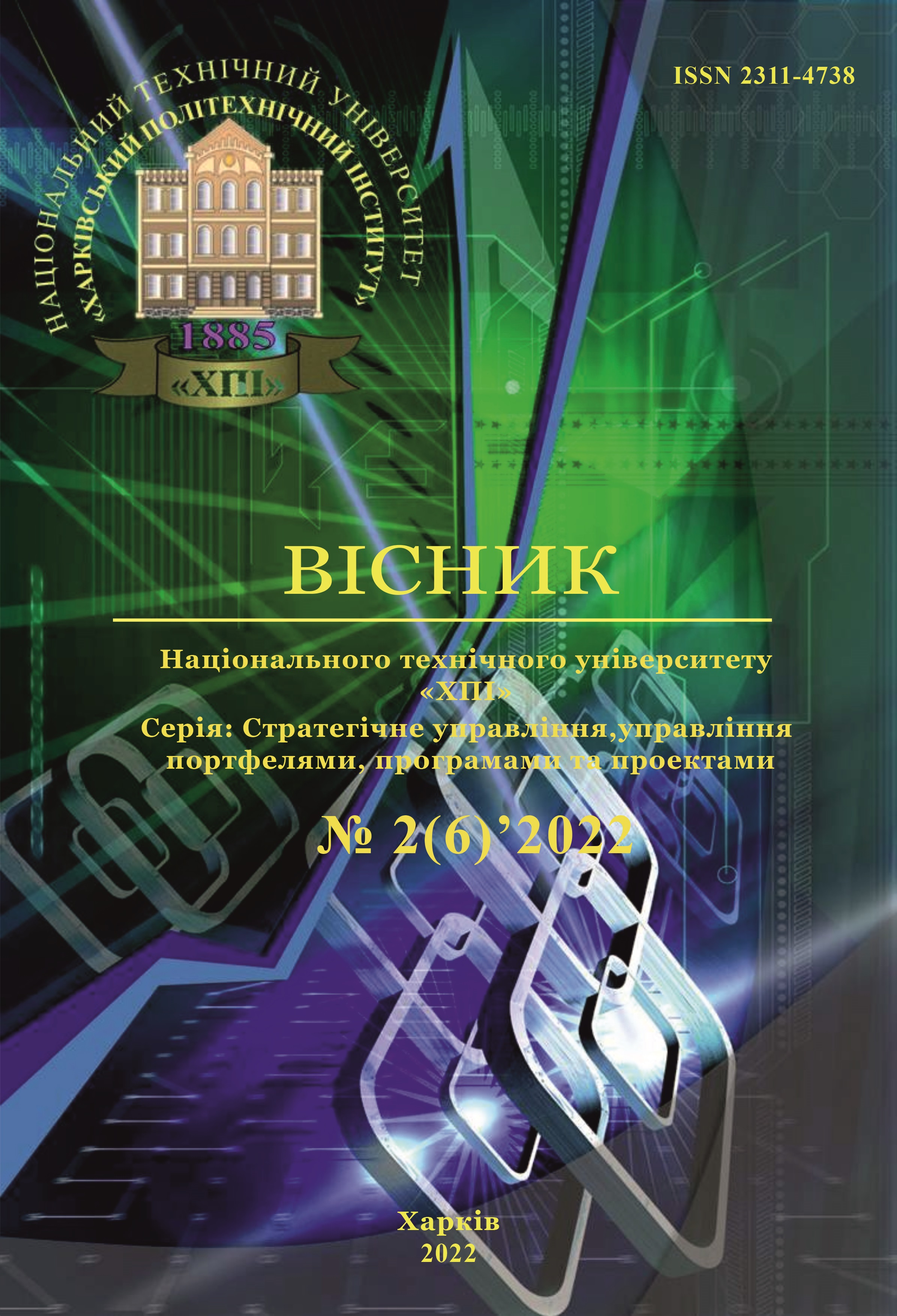PRODUCTION ORGANIZATION OF GRAPHICS PRODUCT
DOI:
https://doi.org/10.20998/2413-3000.2022.6.4Keywords:
computer graphics; pipeline; project management; PythonAbstract
Computer graphics is developing dynamically in various spheres of human life. Paying attention to the high dynamism of the world around us, the issue of optimizing the process of video, animation, character, advertising, avatar, etc. creation is becoming increasingly important. The graphic product requires the fastest production process without paying attention to the fact that it is a development of a feature film, a commercial project of various scales or a project of 10 frames. The analysis of the main achievements of specialists in the field of computer graphics revealed different approaches to the organization of graphic projects. In specialist’s works, attention is paid to the principles of graphic conveyors of major studios and film companies. The purpose of this work is to present recommendations for the organization of the process of developing a short video series by one person, taking into account the automation of the relevant stages of work, on the example of a video of social advertising. To implement this task, the scheme of the project workflow was proposed, where the main stages of creating graphic content are marked, the relevant software and selected parts of the workflow such as preproduction, production and postproduction. The following software tools were selected for the project implementation: Z-Brush, Blender, Autodesk Maya, Adobe After Effects. The analysis of the development algorithm showed the critical points of the scheme, which reduce the speed of the project. To avoid this, it was proposed the technique of "pipeline". As a result of research the methodologies of the graphics pipeline organization was raised, and the beneficial effects of reliable workflow management were illustrated. A visual and detailed form of presentation of the creating a graphic product stages using the "pipeline" technique will help increase the level of knowledge among beginners.
References
Ручкин А. В., Трофимова О. М. Управление проектами: основные определения и подходы. Менеджмент организации. Екатеринбург: 2017, стр. 121-128.
Shakah G., Alkhasawneh M., Krasnoproshin V., and Mazouka D. Graphics Pipeline Evolution: Problems and Solutions. Journal of Computer Science. Vol. 15, no. 7, pp. 880–885, Jul. 2019, doi: 10.3844/jcssp.2019.880.885.
Воронцова Д.В., Савченко Л.М., Богацька А.С. 3D моделювання персонажа комп’ютерної гри за розробленим концепт-артом. Вісник Херсонського національного технічного університету. Херсон: «ОЛДІ-ПЛЮС», 2018. Том 1. С.218-223.
Jian H. CG Animation Production Management and Development Scheme Based on Web Service. 2018, p. 403. doi: 10.1109/ICRIS.2018.00106.
Natalya, T. Chris tchou destiny shader pipeline. Unity Technologies, Unity 5.6 Users Manual. 2017.
Stech K. Rhythm & Hues Looks to Finish «Seven Son» [Electronic resource]. The Wall Street Journal; 21 February 2013. URL: http://blogs.wsj.com/bankruptcy/2013/02/21/rhythm-hues-looks-to-finish-seventh-son/. (дата звернення: 28.12.2021).
Ammon C.J. Visualization and Interaction in Research. Teaching and Scientific Communication. Fall Meeting, American Geophysical Union. 2017.
Tor M.A., Fung W.W., Rogers T.G., Generalpurpose graphics processor architectures. Synthesis Lectures on Computer Architecture. 2018., 2: 1-140.
Hye Jean Chung Global Visual Effects Pipelines: An Interview with Hannes Ricklefs [Electronic resource]. Media Fields Journal; 2011. URL: http://www.mediafieldsjournal.org/global-visual-effects (дата звернення: 20.12.2021).
Venners B. The Making of Python A Conversation with Guido van Rossum [Electronic resource], Part I. Artima; 2003. URL: http://www.artima.com/intv/pythonP.html. Accessed 21 September 2016 (дата звернення: 28.12.2021).
Python in CG Pipeline. Free masterclass [Electronic resource]. Vimeo.com; 3 March 2014. URL: https://vimeo.com/88080700. Accessed 21 September 2016 (дата звернення: 03.01.2022).
Fortenberry T. Industrial Light & Magic Runs on Python [Electronic resource]. Python Software Foundation. URL: https://www.python.org/about/success/ilm (дата звернення: 05.01.2022).
Downloads
Published
Issue
Section
License

This work is licensed under a Creative Commons Attribution-NonCommercial-ShareAlike 4.0 International License.
Our journal abides by the Creative Commons copyright rights and permissions for open access journals.
Authors who publish with this journal agree to the following terms:
Authors hold the copyright without restrictions and grant the journal right of first publication with the work simultaneously licensed under a Creative Commons Attribution-NonCommercial-ShareAlike 4.0 International License (CC BY-NC-SA 4.0) that allows others to share the work with an acknowledgement of the work's authorship and initial publication in this journal.
Authors are able to enter into separate, additional contractual arrangements for the non-commercial and non-exclusive distribution of the journal's published version of the work (e.g., post it to an institutional repository or publish it in a book), with an acknowledgement of its initial publication in this journal.
Authors are permitted and encouraged to post their published work online (e.g., in institutional repositories or on their website) as it can lead to productive exchanges, as well as earlier and greater citation of published work.

